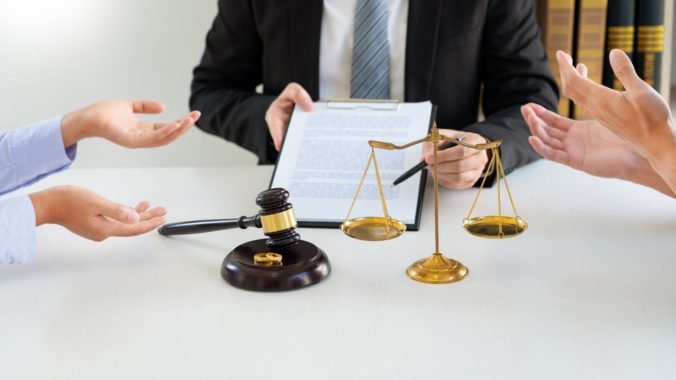Navigating Tampa’s busy streets can be a challenge, especially when it comes to understanding the city’s complex traffic laws. In this article, we’ll provide you with valuable insights from a Tampa car accident lawyer to help you stay informed and safe on the road. From right-of-way rules to navigating tricky intersections, we’ll cover key legal issues and offer practical safety tips to help you navigate Tampa’s traffic with confidence.
Importance of Understanding Tampa’s Traffic Laws
Understanding Tampa’s traffic laws is crucial for avoiding legal complications and ensuring your safety on the road. When it comes to liability in car accidents, knowing the local traffic laws can help you understand who is at fault and, consequently, who is responsible for damages. In Tampa, Florida, the state’s insurance coverage requirements must also be taken into account to ensure compliance and protect yourself in the event of an accident. Being informed about the minimum insurance coverage mandated by the state can prevent legal issues and financial strain in the future. By understanding liability and insurance coverage as outlined in Tampa’s traffic laws, you can make informed decisions that not only keep you safe on the road but also protect you from potential legal and financial ramifications.
Common Legal Issues Faced by Tampa Drivers
Facing common legal issues while driving in Tampa, you may encounter challenges related to insurance coverage and liability in car accidents. Understanding your insurance coverage is crucial. Florida is a no-fault state, meaning your own insurance company covers your medical expenses regardless of who is at fault. However, this can become complex when it comes to liability claims. Determining liability in car accidents can be contentious, especially in cases of shared fault. Florida follows a pure comparative negligence rule, which means that each party’s fault level is considered when determining compensation. This can lead to disputes and legal battles. Seeking legal advice from an experienced car accident attorney is essential to navigate through these common legal issues and ensure your rights are protected.
Key Right-of-Way Rules in Tampa
You may encounter various key right-of-way rules in Tampa, which play a crucial role in preventing car accidents and ensuring safe traffic flow. Understanding intersections is essential, as vehicles approaching an intersection must yield to those already in the intersection or about to enter it. When making a left turn, you must yield to oncoming traffic, pedestrians, and bicyclists. Similarly, when making a right turn on red, you must yield to pedestrians and approaching vehicles. Pedestrian rights are also significant, as Florida law mandates that drivers must yield to pedestrians at crosswalks and intersections. It’s crucial to be aware of these right-of-way rules to navigate Tampa’s roads safely and prevent accidents. Adhering to these rules not only promotes traffic safety but also ensures a harmonious flow of vehicles and pedestrians.
Navigating Complex Intersections in Tampa
To navigate complex intersections in Tampa effectively, consistently yield to oncoming traffic and pedestrians, ensuring safe passage and preventing potential accidents. When approaching a complex intersection, be mindful of traffic signals, road signs, and pedestrian crossings. Always adhere to the designated right-of-way rules, which may vary depending on the specific intersection layout. When making a turn at a complex intersection, yield to pedestrians in crosswalks and be aware of any dedicated turn lanes or signals. It’s essential to maintain a safe and legal speed, especially when navigating intricate intersections, as this allows for better reaction time and decision-making. Understanding Tampa’s traffic laws regarding complex intersections is crucial for safe and lawful driving. By staying informed and attentive, you can navigate these intersections with confidence and minimize the risk of accidents.
Safety Tips for Tampa’s Busy Streets
When driving on Tampa’s busy streets, always prioritize pedestrian safety and comply with traffic signals to avoid potential accidents and maintain a smooth flow of traffic. Safe driving on these bustling roads requires adopting defensive tactics. Stay vigilant for pedestrians at crosswalks and intersections, and yield the right of way when necessary. Keep a safe following distance from the vehicle in front of you to allow for ample reaction time in case of sudden stops. Use your turn signals to communicate your intentions to other drivers, and check your blind spots before changing lanes. Avoid distractions such as texting or adjusting the radio while driving, and always wear your seatbelt. By practicing these defensive tactics and staying alert, you can contribute to a safer and more efficient driving experience on Tampa’s bustling streets.
Conclusion
In conclusion, understanding Tampa’s traffic laws is crucial for avoiding legal issues and staying safe on the city’s busy streets. By familiarizing yourself with right-of-way rules and navigating complex intersections, you can reduce the risk of accidents and potential legal consequences. Remember to always prioritize safety and follow the rules of the road to protect yourself and others while driving in Tampa.

